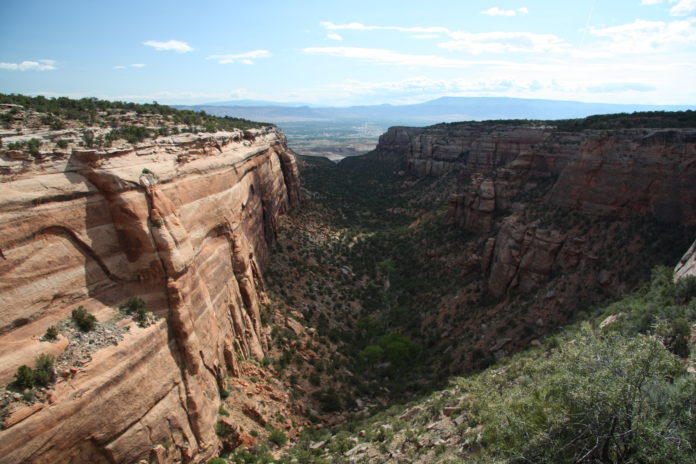
With Coloradans looking to hit the road this Fourth of July weekend, here’s how you can enjoy summer travel while keeping yourself, and others, safe.
•
This year, figuring out your summer travel plans won’t be as easy as throwing a dart at a map. “Unlike past years, instead of asking ‘Where do I want to go?’ travelers are wondering, ‘Where can I go?” says Cathy Ritter, director of the Colorado Tourism Office (CTO).
Unfortunately, the answer isn’t simple. Under the current executive order, some counties will not be permitted to progress from the Safer at Home phase of reopening to the Protect Our Neighbors phase. For example, Garfield County, home to the popular tourist destination of Glenwood Springs, announced on June 30 that it must remain in Safer at Home because of an escalation of COVID-19 cases, stemming in part from Memorial Day weekend.
Wherever you go, though, travelers are being asked to adhere to a new set of etiquette and rules—ones that not only protect the destinations they visit, but the people in them. While best practices vary greatly from place to place, we broke down what you need to know to both enjoy your summer and stay healthy while doing so.
Before You Go, Plan Ahead
Varying degrees of restrictions in mountain towns add an extra layer of complication. “Some rural communities never really locked down and are looking to welcome visitors,” Ritter says. “Others that had bigger outbreaks, though, are more wary of protecting their residents.”
Counties can impose tighter restrictions than the state’s guidelines, so don’t assume every place is playing by the Protect Our Neighbors playbook. (Durango, for example, has extended its mandatory face-covering order indefinitely.) While most “natives” would turn their nose up at Colorado Welcome Centers meant for tourists, those facilities, along with the 1-800-COLORADO hotline, are now among the most useful resources for finding up-to-date information on what areas and attractions are open. Colorado Counties Inc. also has a state-wide map showing coronavirus restrictions by county, including links to individual area’s websites, with the Colorado Department of Public Health and Environment (CDPHE) providing contact information to local health agencies. With policies constantly in flux, it’s important to check restrictions up to the day before your trip.
The same goes for lodging, dining, and tours. Most hotels are now open at 50 percent occupancy, and restaurants can provide dine-in eating as long as they enforce social distancing. Guiding services such as horseback riding and fly fishing are limited to 10 people plus staff. Many eateries have added outdoor patios to expand their capacity, while tour operators and summer camps are following varying levels of social-distancing policies, such as limiting reservations to members of the same household. Call ahead to make sure that the place you plan to stay or eat is accepting reservations and what tour operators’ cancellation policies are.
Katie Ertl, senior vice president for mountain operators for Aspen Snowmass Ski Resort, which opened summer operations on June 12, notes that booking lodging even further ahead than normal is advisable. “We’re already seeing an influx of bookings in August and September, and many people right now are booking rentals, since they can work remotely,” quickly filling up Airbnbs.
If camping, expect developed sites to feel more like a backcountry experience: Most public land is open, but certain services, such as shower blocks, laundry facilities, and visitors’ centers, are closed or have restricted hours. “Be prepared for pit toilets instead of flushable ones,” CPW’s Farrell says. Unfortunately, there is no centralized place for information; individual regulations, again, vary by county and land management agency.
Most of the state’s 16 national parks, monuments, recreation areas, and historic sites are in some sort of phased reopening, with Rocky Mountain National Park now requiring reservations spaced out throughout the day to handle overcrowding. (All the restrictions and COVID-19-related alerts at Colorado sites within the National Park Service are posted here.) State parks remain open, including campsites, though group sites and cabins are limited to 10 people, and dispersed camping is prohibited in certain counties with tighter restrictions.
Policies for Bureau of Land Management (BLM) and U.S. Forest Service (USFS) areas vary by place; the BLM keeps updates for each of its regions on its website and recommends calling individual offices ahead of time, while the USFS offers an interactive map with links to status updates for its different regions.
For day trips or backpacking, check Colorado Trail Explorer to find less-crowded options, as well as ones that are closed due to COVID-19 or other maintenance.
Know the New Travel Etiquette
“We now have a new definition of ‘responsible travel,’” CTO’s Ritter says. “In the past, we focused on educating travelers to care for destinations. Now, we’re asking them to show care for other travelers and the people who live in those destinations.” According to CTO’s new CARE for Colorado initiative, this includes five basic tenants: maintain six feet of distance, indoors and out; wear a mask around others; keep things clean by washing your hands and avoid touching shared surfaces when possible; stay home if you’re sick; and check guidelines beforehand.
This new etiquette applies to trails and campgrounds as well. While whether or not to wear masks in the outdoors has been controversial, with instances of “mask shaming” on both back- and front-country routes, CPW asks that hikers and bikers keep a face covering in their pockets or around their necks to put on when passing others. And although the agency still asks people to avoid stepping off trails wherever possible, it’s acceptable if necessary to maintain six feet of distance between your group and another (try to find a rock or other solid surface to step onto to minimize damage to surrounding flora and fauna).
“Leave No Trace” principles are also more important than ever. With limited staffing on public lands, most agencies are asking visitors to pack out trash, even if bins are available. Use the restroom before you leave the house for a day hike. And, in order to not strain emergency and search and rescue services, both CPW and the CDPHE stress that it’s crucial to follow fire bans and avoid risky activities. This is not the year to test your survival skills.
Hit the Road
According to the CDPHE, while airports and some scenic railways are open, road trips are by far the safest option for limiting COVID-19’s spread. It seems that the public agrees: RV rentals are up a reported 650 percent.
For those who want or need to be extra cautious, getting a dose of nature might not even require leaving your car. Colorado has more scenic byways than any other state, with 26 routes crisscrossing from the mountains to the eastern plains. The CTO has developed a microsite dedicated to the state’s byways, mapping out over 200 different routes.
The CDPHE recommends staying close to home; a good rule to follow is to only go to destinations you can reach round trip on a single tank of gas. If you do have to go farther afield, be mindful of rural communities. The best way to minimize contact is to pack all food, water, and toiletries you’ll need for the duration of your trip, and fill up an extra gas can. The CDPHE also recommends sanitizing high-touch surfaces, such as door handles, steering wheels, and radio knobs, on long car rides. And always make sure you’re equipped with what has become the standard “coronavirus kit”: a mask, gloves, and hand sanitizer, in case you do need to stop.
Credit: Source link































